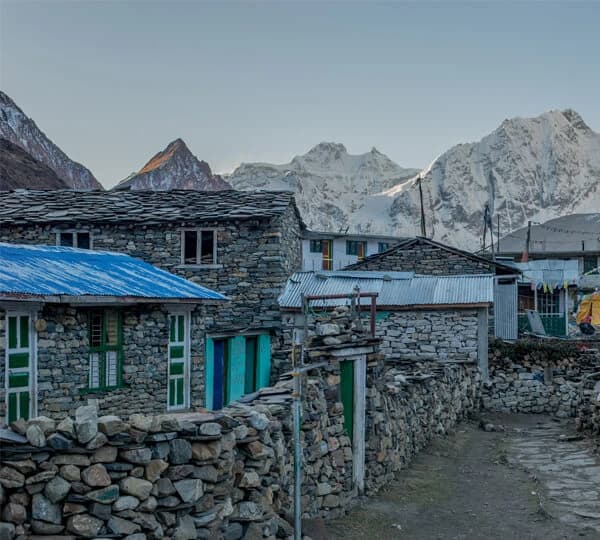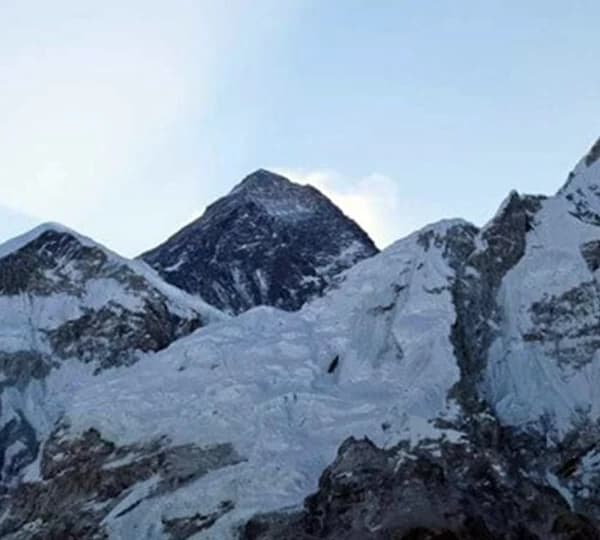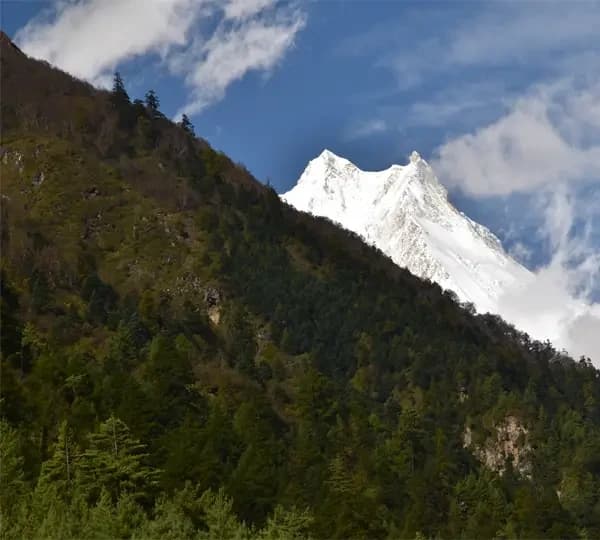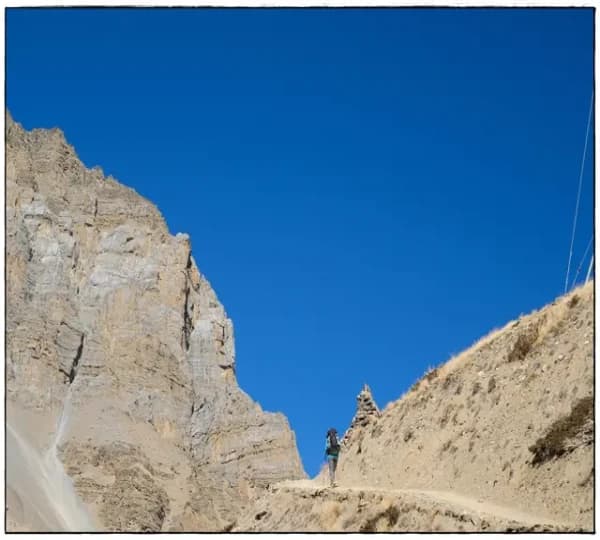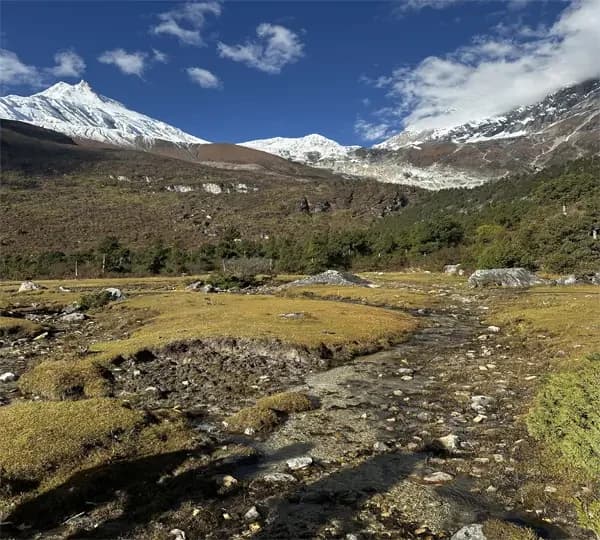Trekking and Climbing Equipment Images

The Global Adventure Trekking advises climbers and trekkers to review and finalize their equipment list at least two to three weeks before their trip date. This allows you to:
Reasons to Review Your Equipment List Early
- Equipment should be tested and fitted, particularly boots, crampons, harnesses, etc.
- Purchase or replace any missing items: While some equipment may be less expensive in Kathmandu, it is best to bring personal or fitted items from home, such as boots or layers of underwear.
- Pack effectively: Don't forget anything important or overpack.
- Allow for the purchase or rental of equipment in Kathmandu. If you are experienced and know what to expect, it is better to rent some technical equipment locally, such as an ice axe, sleeping bag, etc.
- Verify the weight restrictions for both domestic and international flights in Nepal.
Details of the Trekking Equipment List
Trekking Gear
- Trekking poles (very helpful, especially downhill)
- Sunglasses (wraparound, good UV protection)
- Neck gaiter (Buff or similar)
- Water bottles (2L total, leakproof)
- Water purification tablets (chlorine or iodine)
- Sun hat (for lower altitude)
- Woolen hat/beanie (for higher altitude)
- Small towel (lightweight, quick-dry)
- Flashlight or headlamp (with extra batteries)
- Small daypack (optional for acclimatization hikes)
Clothing
- Base Layers
- Thermal shirts (top and bottom, 1–2 sets)
- Nightwear thermals (silk-weight preferred)
- Underwear (multiple pairs)
- Socks (multiple pairs, including thick ones)
- Mid Layers
- Fleece/sweatpants (for camp)
- Lightweight down jacket
- Long-sleeve trekking shirts
- Moisture-wicking T-shirts (2–3)
- Trekking pants (2 pairs)
- Outer Layers
- Waterproof rain jacket and pants (hard shell)
- Insulated jacket (down or synthetic)
- Windproof gloves (with liners if needed)
- Outer mittens or gloves (insulated for summit)
- Gaiters (snow or mud protection)
- Mountaineering boots (crampon-compatible)
- Camp shoes/sandals or lightweight running shoes
Camping & Overnight Gear
- Mountaineering tent
- Sleeping bag (rated for expected temps)
- Sleeping pad (inflatable or foam)
- Emergency bivy or space blanket
- Headlamp or flashlight (extra batteries)
- Camp pillow or stuff sack as a pillow
- Earplugs (optional but helpful)
Climbing gear list
Kitchen & Food
- Backpacking stove
- Fuel (check availability in Kathmandu)
- Cooking pot/set
- Bowl/plate
- Spoon/fork/spork
- Insulated mug
- Food (energy bars, freeze-dried meals, trail snacks)
- Water container (foldable or bottle)
- Water filters or purification tabs
- Trash bags/ziplocks (Leave No Trace)
- Lighter/matches
- Pot scrubber/sponge
Navigation & Communication
- Map (laminated or in waterproof case)
- Compass
- GPS/watch with altimeter
- Guidebook or printed route topo
- Cell phone (offline maps downloaded)
- Extra battery pack/solar charger
- Satellite communicator (InReach or similar)
- Whistle
- Notebook and pencil/pen
Hygiene & Health
- First aid kit (personal meds, blister care)
- Hand sanitizer
- Toothbrush & toothpaste
- Biodegradable soap
- Shampoo (small bottle)
- Lip balm (SPF 30+)
- Sunscreen (SPF 30+)
- Scissors or nail clippers
- Menstrual hygiene products (as needed)
- Toilet paper
- Sanitation trowel
- Wet wipes or face cloth
- Small microfiber towel
- Bug repellent (seasonal)
- Deodorant wipes (optional)
Repair & Emergency Kit
- Multi-tool or knife
- Duct tape (wrapped around bottle or trekking pole)
- Zip ties
- Paracord or accessory cord
- Tent repair kit
- Safety pins
- Emergency bivy sack
Optional but Useful
- Camp journal/book
- Playing cards (for downtime)
- Cash/ID/passport copies
- Climbing/trekking permits
- Lightweight dry bags (for organizing gear)
- Stuff sacks or packing cubes
- Personal snacks from home (chocolate, nuts, etc.)
- Small gifts for guides/porters (optional but respectful)
- Toiletries: shampoo, soap, scissors, hair products, toothbrush and toothpaste, tissues, sun cream, chapstick, antiseptic hand wipes, face washer, etc.
Necessary Mountain Climbing Gear
Nepal is the home of eight thousand meters of mountains and 1300 climbing peaks. Of course, you may choose one of the peaks to try before taking any bigger expeditions.
Here is the list of climbing gear that you need for your expedition.
Climbing & Technical Gear (Additions)
- Belay gloves (separate from hand protection tape)
- Climbing shoes (if any rock climbing or mixed routes are planned)
- Personal anchor system (PAS) or daisy chain
- Climbing slings (different lengths) if not already included in “runners”
- Ascenders (for glacier travel or rope ascent)
- Snow pickets (if not already included in “snow protection gear”)
- Crevasse rescue kit (pulleys, tibloc/microtraxion, cord, carabiners)
- Avalanche gear (transceiver, probe, shovel) if avalanche-prone area
Navigation (Additions/Clarifications)
- You’re quite thorough, but:
- Paper map in a waterproof case
- Route topo or beta (printed or downloaded)
- InReach/Satellite communicator (especially if out of signal range)
- Power bank / solar charger for phone and GPS
Overnight Gear (Additions)
- Sleeping pad
- Bivy sack (optional but useful for emergencies or lighter trips)
- Earplugs (if sharing a tent)
- Lightweight camp pillow or stuff sack used as a pillow
Kitchen & Food (Additions)
- Lighter/waterproof matches
- Pot scrubber/sponge
- Trash bag / ziplocks (Leave No Trace)
- Bear-proof food storage (bear canister or hang system if in bear country)
Clothing & Footwear (Additions)
- You’re mostly complete. Minor suggestions:
- Camp shoes/slippers (for around camp)
- Balaclava or neck gaiter (in case of extreme cold/wind)
- Extra gloves (light pair + heavy pair)
- Sun hat/sunglasses (especially for glacier/snow travel)
- Sun sleeves (optional for high-exposure areas)
Health & Hygiene (Additions)
- Sunscreen & lip balm (SPF 30+)
- Blister kit/foot care supplies
- Small first aid kit
- Bug spray or head net (seasonal/area dependent)
- Microfiber towel
- Deodorant wipes or biodegradable soap
- Earplugs (again, if needed)
Repair & Emergency
- Not clearly listed yet—you should add a few of these:
- Multi-tool or knife
- Duct tape (small roll or wrapped around a bottle)
- Tent repair kit
- Zip ties
- Paracord or accessory cord
- Emergency bivy or space blanket
- Whistle
- Notebook and pencil/pen (for emergencies or notes)
Optional but Smart
- Climbing log or journal
- Small book or cards (for long trips/downtime)
- Cash/ID (sometimes needed in remote lodges or for transport)
- Permits/reservations if required for your area
Trekking in the Himalayan region is always challenging with natural disasters, global warming, and so on. You highly suggest having enough warm gear, including rain gear, no matter when or where you are going to trek. The above list is just a sample. Those suggesteded items are good enough for the Annapurna circuit trek, the Manaslu circuit trek, and the Everest base camp trek.

